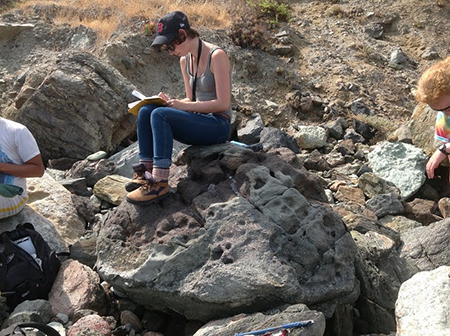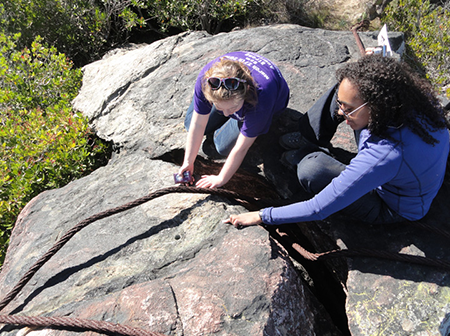Tracing evidence of fluid flow in eclogite, blueschist, and amphibolite blocks in subduction zone mélanges
 Fluid flow in subduction zones affects many areas of study in earth science, including the generation of arc magmas, the formation of continental crust, the geochemical evolution of the mantle, and the generation of seismicity in subduction zones. There are a number of outstanding questions in understanding fluid release and flow during subduction, including mass transfer during subduction, how fluids change with increasing depth in subduction zones, the fluxes of fluids coming off the dehydrating slab and whether fluids are channelized in their upward ascent. Fluid-rock interactions in ancient subduction zones have left behind signals in high-grade blocks found in mélange that are complex on a variety of scales. In order to properly evaluate the complicated signals found in these blocks, it is important to perform detailed investigations of both petrologic and geochemical indicators of fluid flow on a variety of scales (mm- to m-scale). Our research has focused primarily on using lithium and its isotopes as tracers of fluid-rock interactions.
Fluid flow in subduction zones affects many areas of study in earth science, including the generation of arc magmas, the formation of continental crust, the geochemical evolution of the mantle, and the generation of seismicity in subduction zones. There are a number of outstanding questions in understanding fluid release and flow during subduction, including mass transfer during subduction, how fluids change with increasing depth in subduction zones, the fluxes of fluids coming off the dehydrating slab and whether fluids are channelized in their upward ascent. Fluid-rock interactions in ancient subduction zones have left behind signals in high-grade blocks found in mélange that are complex on a variety of scales. In order to properly evaluate the complicated signals found in these blocks, it is important to perform detailed investigations of both petrologic and geochemical indicators of fluid flow on a variety of scales (mm- to m-scale). Our research has focused primarily on using lithium and its isotopes as tracers of fluid-rock interactions.

Keck Geology Consortium undergraduate, Lauren Magliozzi takes notes sitting on a reaction rind with feet firmly planted on the garnet amphibolite core.

Graduate student Julia Gorman and undergraduate Natalie Sievers examine a reaction feature on a garnet amphibolite block.
